Programming or coding has been occupying the practical world for a long period of time now. Our modern world offers a huge opportunity for those with a computer science background. In fact, people from other sectors, as well, train themselves additionally to enter this world of opportunity. Hence, candidates expecting a decent job of programming should definitely prepare themselves for the upcoming programming interview questions. Here, every interview question requires a smart answer to the board’s smart inquiry. Programming Interview Questions usually include questions of three categories – Data structure, algorithms, and logical questions as well.
Your interview review board will not be complete unless you have gone through these three types of question categories.
Programming Interview Questions and Answers
As said earlier, an interview board for programming or coding based jobs will require knowledge over three types of question categories. Here, we are going to cover those possible programming interview questions. So, once you have gone through our collection of questions, you should feel confident enough to face the interview board.
1. What do you mean by “Computer Programming”?
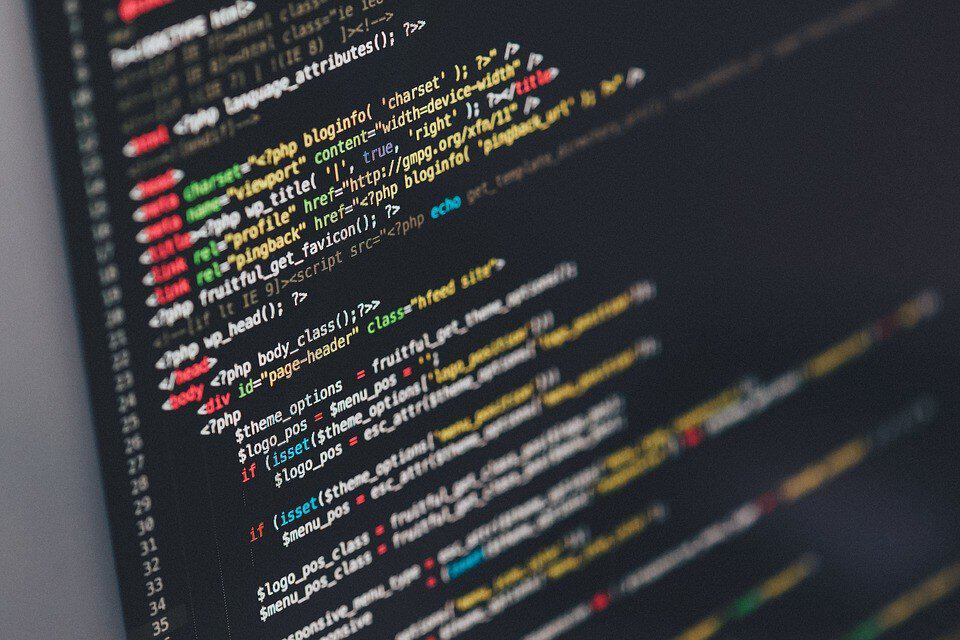 This is one of the very basic programming interview questions. It is often asked at the beginning of every interview. Our collection will include such common questions for you to cover up all the levels of the interview.
This is one of the very basic programming interview questions. It is often asked at the beginning of every interview. Our collection will include such common questions for you to cover up all the levels of the interview.
Computer programming, also known as computer coding, is a series of tasks implemented to achieve certain figurative results. The process takes place through the meaningful execution of computer programs. It involves planning and coding algorithms, reforming a program, and also maintenance and updating different structured codes.
Computer programming is executed by any of the programming languages available. Every programming language is actually a group of instructions that command the machine to execute any specific task set by the programmer. Computer programming is a complex process that requires knowledge over specific programming languages users want to use to obtain the specific output.
2. Do you know about High level and Low-level programming languages?
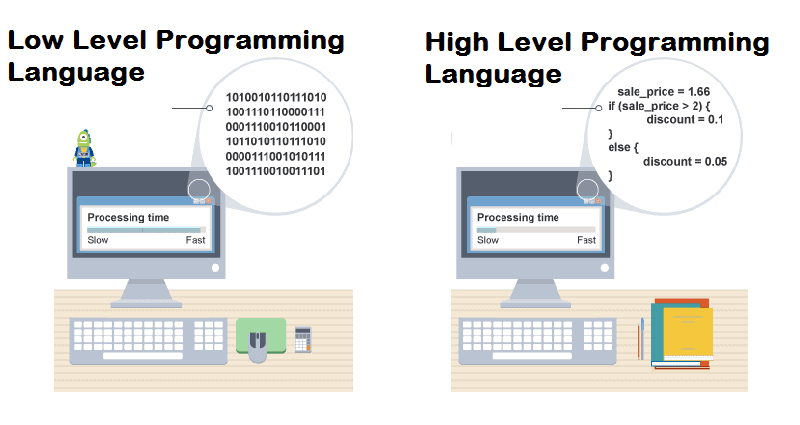 Yes, I can. High-level programming languages are not dependent on the machine type you are using. A high-level programming language is highly simplified. It is close to regular languages so that programmers can have an easy experience with program development. For example, C, Java, FORTRAN, etc. are high-level programming languages.
Yes, I can. High-level programming languages are not dependent on the machine type you are using. A high-level programming language is highly simplified. It is close to regular languages so that programmers can have an easy experience with program development. For example, C, Java, FORTRAN, etc. are high-level programming languages.
On the contrary, low-level language is close to machine language. The low-level programming language offers no simplification of machine instructions. Such as Assembly language.
3. What are “translators” in computer programming?
Translators in computer programming are processors for different programming languages. Translators convert programming languages and make it readable by the machine. In a word, translators translate different programming languages into machine languages. There are three types of translators in computer programming. They are,
Compiler & Interpreter: Compilers and Interpreters are both alike. They both convert high-level programming language into low-level programming languages. They convert any programming language (such as C programming) into machine language.
Assembler: Assembler in computer programming is a program. It transforms assembly language into machine language.
4. Can you explain what “debugging” is?
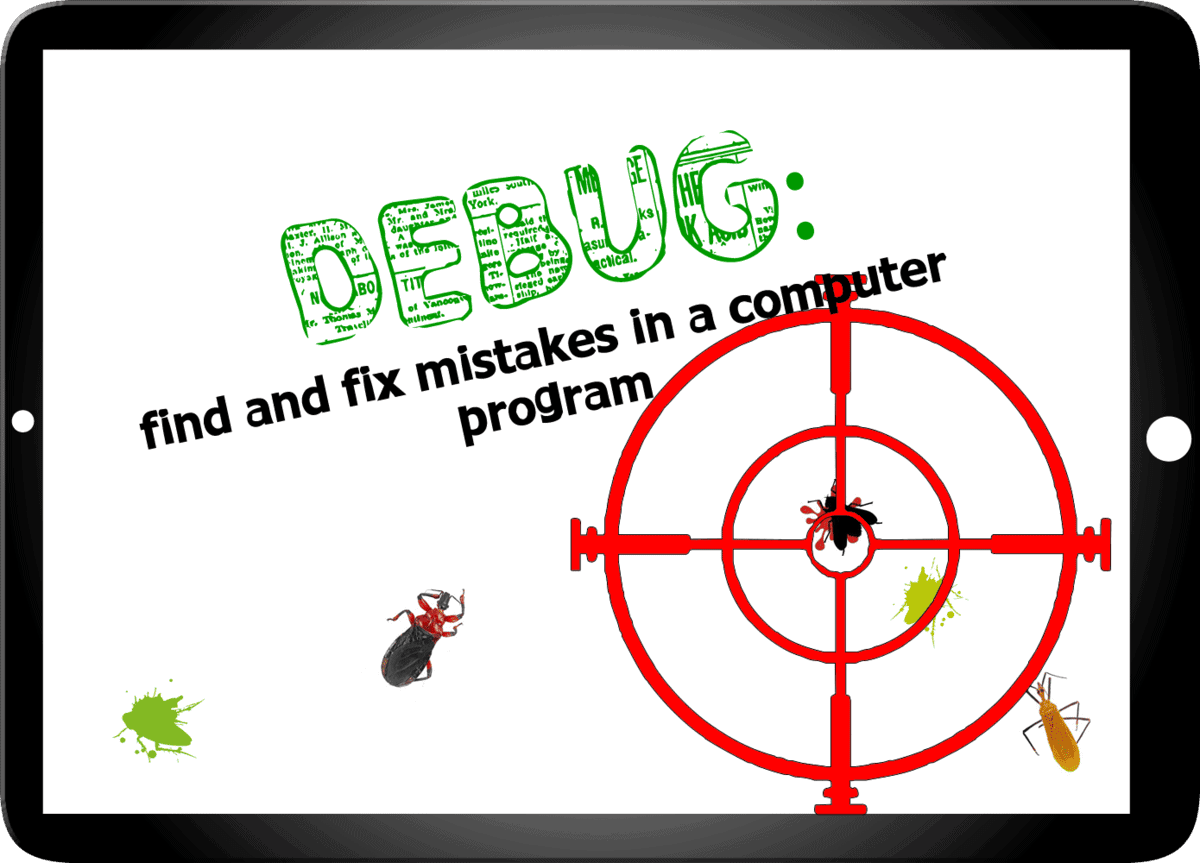 Debugging is a process. Through this process, your machine can find faults or errors in your programming. It also resolves or fixes defects that prevent your written code from executing certain tasks.
Debugging is a process. Through this process, your machine can find faults or errors in your programming. It also resolves or fixes defects that prevent your written code from executing certain tasks.
This process is continued through Debuggers, a software that helps programmers to find errors, execute a program, monitor the entire process, and stop it whenever it is needed.
5. What do you know about “Variables”?
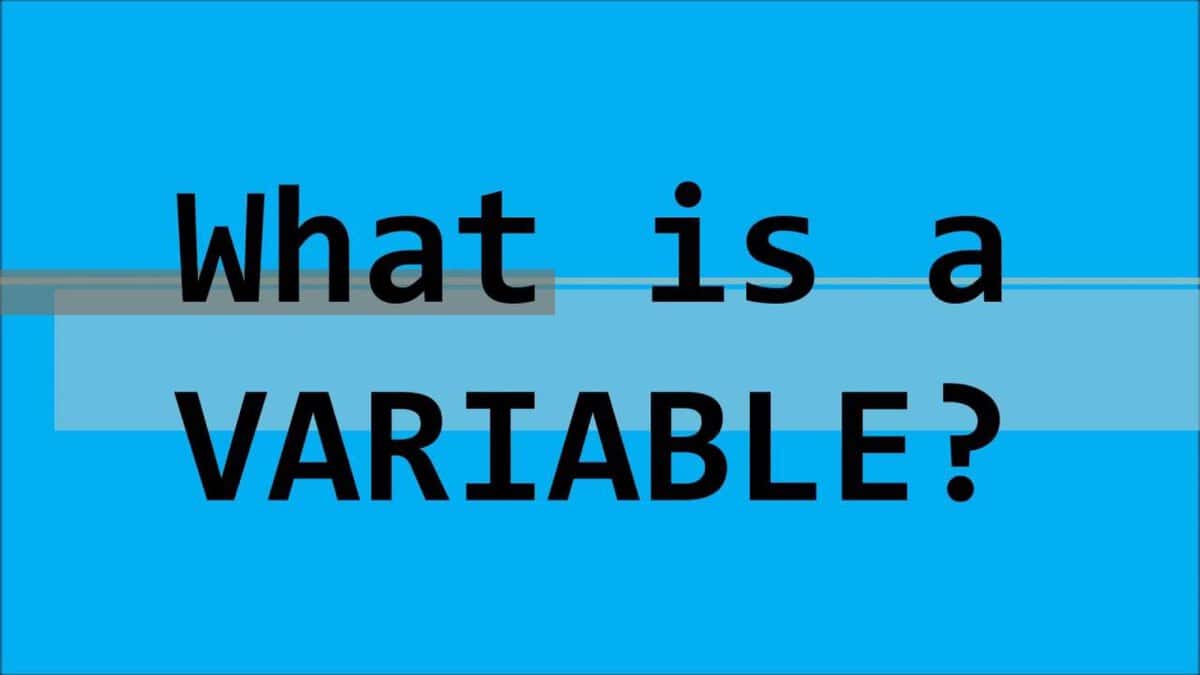
Constants and variables are very usual terms in computer programming. The next following three questions in our list of programming interview questions are based on constants and variables.
Variables are often referred to as “containers” for information. They reserve information that is to be mentioned in programming later. Variables can also be modified for the proper execution of code anytime, anywhere. Variables are separated by memory address, a.k.a location. Often they come with symbolic addresses whose value can be changed according to the requirement of programmers.
The main purpose of variables is to stock data. This data can be used throughout your programming.
6. Please explain what “constant” is and its types.
In computer programming, a constant is such a unit whose value cannot be changed throughout the implementation of the programming. There are two types of constants available in coding.
Numeric Constant: This type of constants are numbers. Such as 5, 19, 33.1, etc. Integers, floats, single and double precision numbers, etc.
String Constant or String Literals: String constants, in programming, hold alphabetical characters. You can hold sequential characters in a string constant as well. However, whether it is a single character or sequential, it has to be placed inside double-quotes. For example, “I am going for a trip” is a string constant that holds 20 characters.
Note, you can place a maximum of 255 characters as a string constant, including ‘space.’
7. What’s the difference between variables and constants?
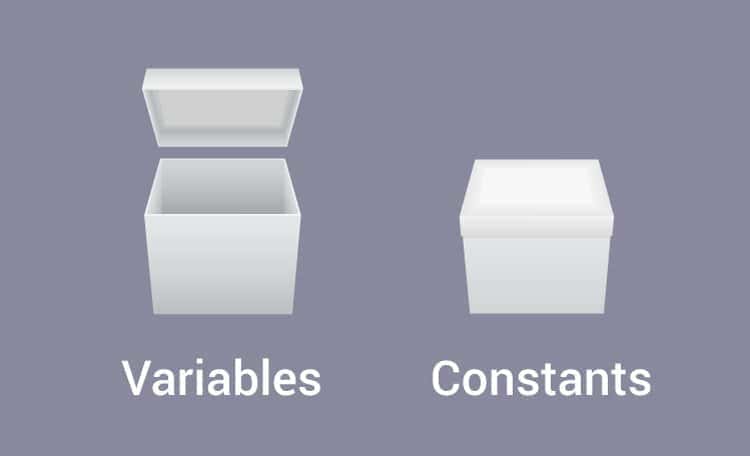 A constant in programming is considered similar to variables. However, constants cannot change its value. Once a constant has been defined, it will be the same throughout the entire programming. However, when it comes to variables, anytime the value of a variable can be changed or set to a new one to influence the output.
A constant in programming is considered similar to variables. However, constants cannot change its value. Once a constant has been defined, it will be the same throughout the entire programming. However, when it comes to variables, anytime the value of a variable can be changed or set to a new one to influence the output.
A constant, in computer programming, is a fixed value. Whereas, a variable is a memory location. When you manipulate a variable, the memory location remains the same; however, only the value, it’s been holding changes.
8. Can you explain what an “algorithm” is?
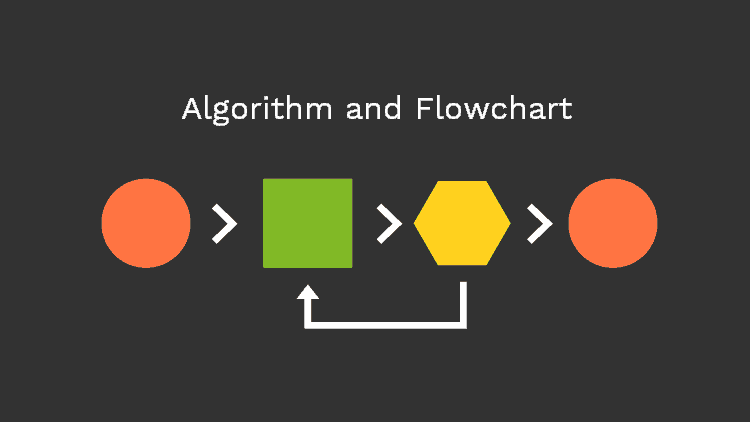 In computer programming, an algorithm is defined as a collection of limited steps. It is also regarded as a computer procedure, a procedure that commands your machine to take certain steps and execute certain tasks. It actually comes in a step by step procedure. While writing an algorithm, programmers should be aware of clarity, it’s limit, and it’s productivity.
In computer programming, an algorithm is defined as a collection of limited steps. It is also regarded as a computer procedure, a procedure that commands your machine to take certain steps and execute certain tasks. It actually comes in a step by step procedure. While writing an algorithm, programmers should be aware of clarity, it’s limit, and it’s productivity.
An algorithm is not only a series of steps. It can also influence data in different ways. For example, through an algorithm, you can place new data within the set of steps, follow a repetitive command or search for a specific item.
9. Do you know about the “flowchart”?
The flowchart in computer programming is a diagram that represents programming algorithms. Each step of algorithms is shown in sequential boxes that are connected by arrows. These arrows have to be set in order. Otherwise, the goal of performing certain logical tasks won’t be complete.
Note, the flowchart in programming comes in four general steps. They are Start, Process, Decision, End.
10. What are “Keywords” in computer programming?
Keywords in computer programming are reserved words. These reserved words have special meaning for a specific programming language. Keywords are used for serving specific purposes. One particular keyword is not replaceable for another keyword. Every programming language has a set of keywords. Also, keywords cannot be used as variables or constants.
Some examples for keywords are break, if, for, char, else, float for C Programming, continue, del, lambda, not, def and others for Python, abstract, implements, finally, double, volatile, and others for Java.
11. What do you know about “operators.”
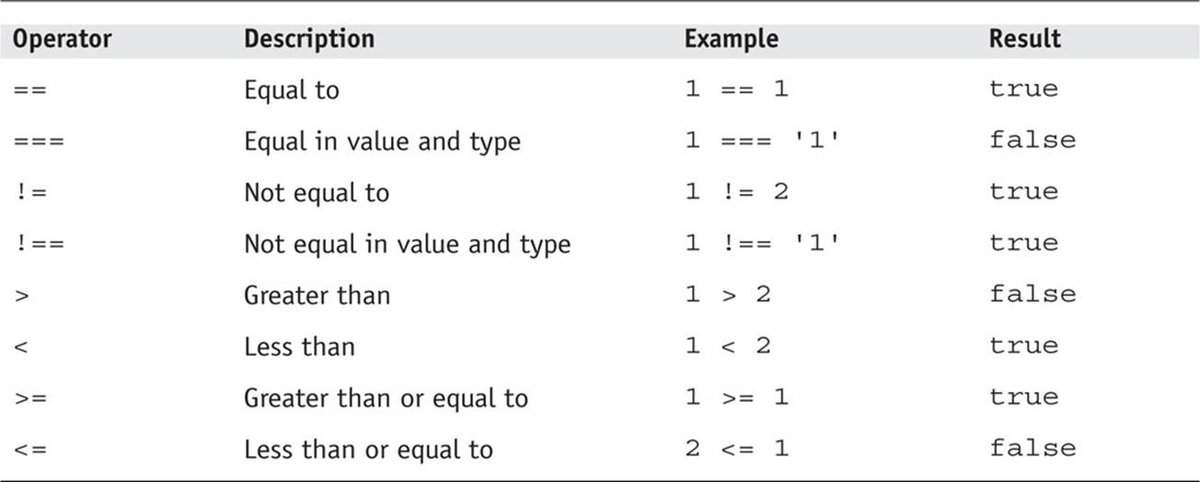
Operator is a mandatory term in programming. Whether it adds as one of the programming interview questions or not, you should be well aware of it.
Operators are special symbols in computer programming. They are used for carrying out mathematical (also includes logical and relational) operations in programming. It tells your compiler/ interpreter to perform specific mathematical tasks and bring the output. For example, asterisk sign (*) represents mathematical multiplication while double && represents logical and in different programming languages.
There are four kinds of operators, Arithmetic, Assignment, Logical, and Relational.
Arithmetic operators stand for mathematical operators. It includes “+” for addition, “-” for subtraction, “*” for multiplication, “/” for the division.
Assignment operators are used to assigning different values or new outputs and strings to variables.
Logical operators are used for decision making based on given conditions. In other words, logical operators help your machine to get to the final result based on several conditions starting from simple to complex.
Relational operators allow you to justify any given relationship between two units. They indicate whether true or false relations. For example, greater than stands for (>), less than or equal to stands for (≤).
12. Can you explain “reliability” in the programming language?
Reliability, in computer programming, defines how better off or crush-resistant your written codes are. A specific period of time will be given. And if your codes work properly during this period of time, it will be considered reliable. Otherwise, if the program crashes, it will not be considered reliable.
Reliability doesn’t depend on which programming language you are using to compose. But it does depend on how you have written your code.
13. What is “modeling language”?
The modeling language is any kind of graphical language in computer programming. It is not entirely an artificial language but, however, similar to one. Modeling language provides a proper expression of a system, construction of a model, or information through an organized set of rules and regulations.
Some examples of modeling languages are:
- Flowchart
- Express
- System modeling language.
- Jackson modeling language.
- Extended enterprise modeling language.
- Business processing modeling language.
- Unified modeling language.
14. Mention the errors that occur while executing a program?
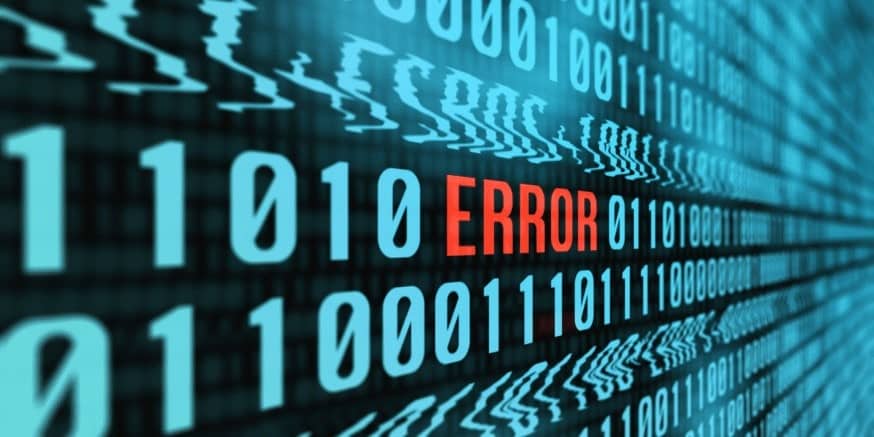
Errors in computer programming is a very common issue. We are sure it will add to your list as one of the major programming interview questions.
There are three types of errors that can interfere with the execution of computer programming. They are:
- Runtime error.
- Logical error.
- Syntax error.
15. Explain different types of errors in computer programming.
Let’s start with Runtime error,
Runtime Error: Runtime error takes place when a program is led to illicit activity. Such as dividing an integer with zero. Fortunately, when a runtime error happens, it is displayed immediately by your computer. Your machine will stop the program immediately and show an identifying message. Hence, you can easily find out where the error occurred and fix it.
Logical Error: Logical errors are the hardest errors to locate. It takes place when there is an incorrect logic in the codes. As it is entirely upon the nature of the program, your compiler or interpreter cannot detect this fault in the logic; hence, these are very problematic to find out.
Syntax Error: There are certain grammatical regulations in computer programming. A syntax error occurs when there is a defiance of these rules. When your program runs through compile-time, syntax error can be easily detected on the exact line it has occurred.
16. Explain what “Maintain and update the program” means.
Yes. Maintaining and updating the program is an after process to make new modifications to an already delivered software or hardware.
When you release new software or hardware, there can be bugs or faults that are needed to be fixed. Hence, developers need to modify core programming to eliminate the problem. Sometimes updating programs can also come with increasing the performance of software, adding a new feature, or bringing modification to the existing ones.
17. Can you explain what “arrays” are?
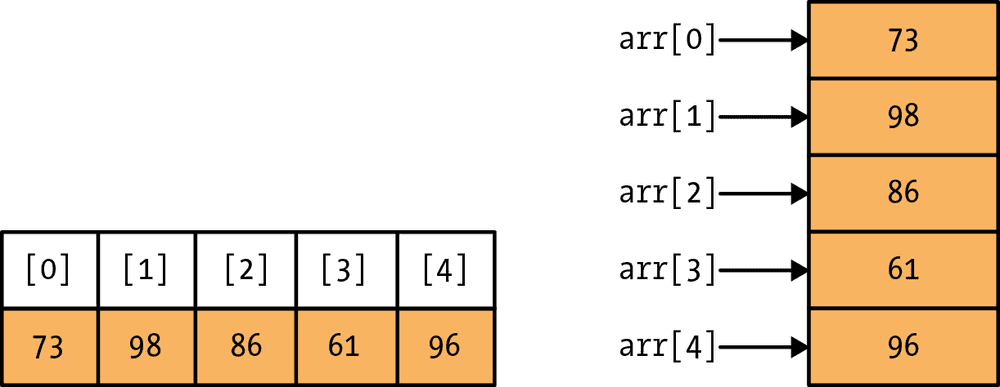
This is one of the very common programming interview questions. More or less, every candidate has to face this question. Here is what the answer is,
Arrays in computer programming are a type of data structure that holds the same type of data in a group. Its main function is to store data of the same type. However, you can also consider an array as a set of variables of the same category. As variables are memory locations. Hence, arrays can also be defined as a set of memory locations as well.
For example, int stu[50]. Here, stu is an array that can store up to 50 components that are of integer type. You can also define an array without its dimension as well. However, in this case, you have to mention the elements like this,
Int stu[ ] = (1, 2, 3 …… 50)
Arrays can also be of float and char type as well.
18. What is a multidimensional array?
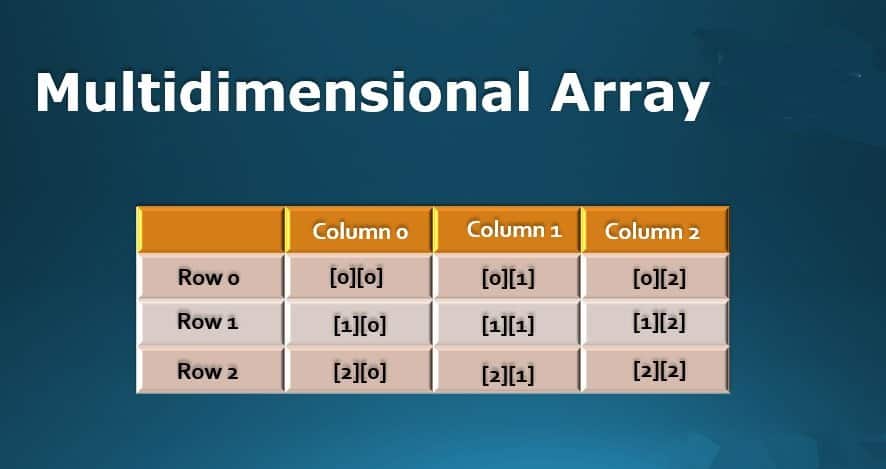 Any array in computer programming that holds more than one dimension is known as a multidimensional array. In other words, it is an array that holds other arrays or several indexes. In computer programming, a single-dimensional array is easy to read and write. But, however, it is not applicable to different aspects of a project. Hence, a typical code work will need more than a one-dimensional array. This is where multi-dimensional arrays are used.
Any array in computer programming that holds more than one dimension is known as a multidimensional array. In other words, it is an array that holds other arrays or several indexes. In computer programming, a single-dimensional array is easy to read and write. But, however, it is not applicable to different aspects of a project. Hence, a typical code work will need more than a one-dimensional array. This is where multi-dimensional arrays are used.
The lowest levels of arrays that can be called a multi-dimensional array is a 2D dimensional array.
19. Can you explain what “subroutine” is?
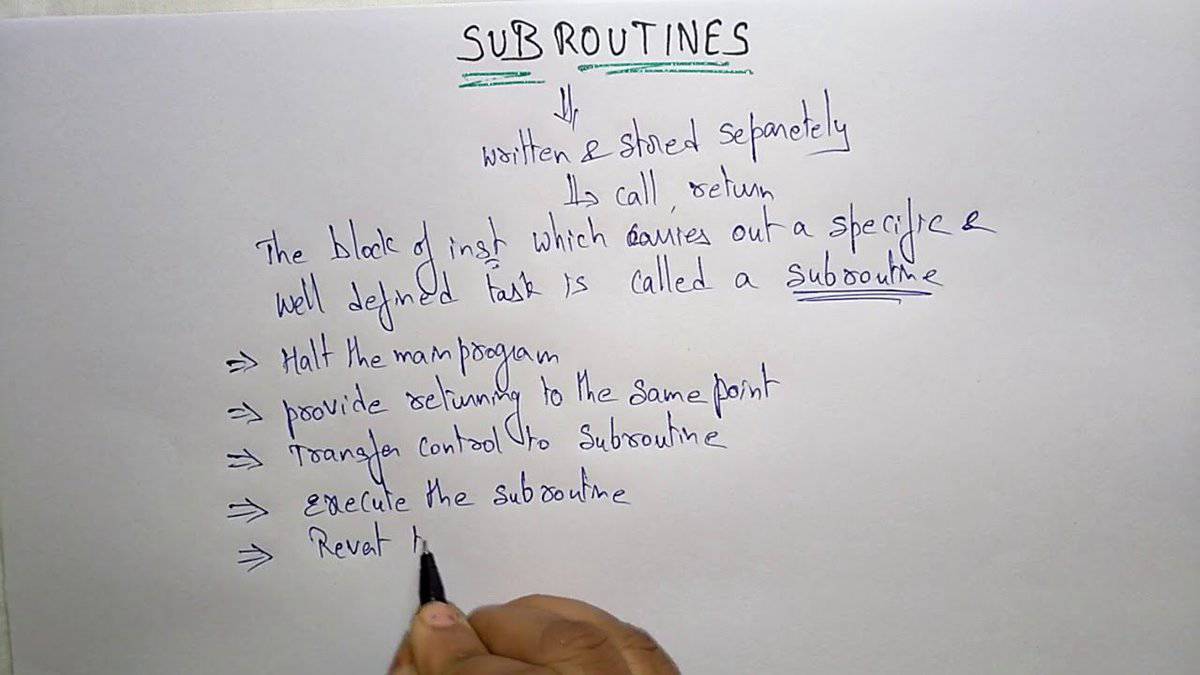 A subroutine is a series of instructions. They hold instructions for computer programs. Subroutines are used for carrying out particular tasks grouped as a unit. Based on different programming languages, subroutines are known by different names, such as functions, sub-programs, routines, or procedures, and some other.
A subroutine is a series of instructions. They hold instructions for computer programs. Subroutines are used for carrying out particular tasks grouped as a unit. Based on different programming languages, subroutines are known by different names, such as functions, sub-programs, routines, or procedures, and some other.
Note, Subroutines can be called from anywhere in programming. Based on where you call them, they will perform that specific task there.
20. What do you know about “loops”?
 These types of questions are very common in the programming interview board. Every serious candidate should be aware of these programming interview questions.
These types of questions are very common in the programming interview board. Every serious candidate should be aware of these programming interview questions.
In coding, a loop is such an instruction that repeats itself until a certain condition is met. In other words, a loop is a form of instruction. More elaborately, every loop in programming holds an inquiry. A loop runs several times until the inquiry is met. There are three types of loops in computer programming.
For Loop: For loop is the most used loop in programming. Here, programmers are aware of the loop number they are about to set.
While Loop: This loop comes handy when the programmer is not aware of the number of loops. While the loop keeps on repeating until the given condition is not true anymore.
Nested Loop: The Nested loop is different from the For and While loop. When one loop is placed inside another one, it is called a nested loop.
21. What is the machine code?
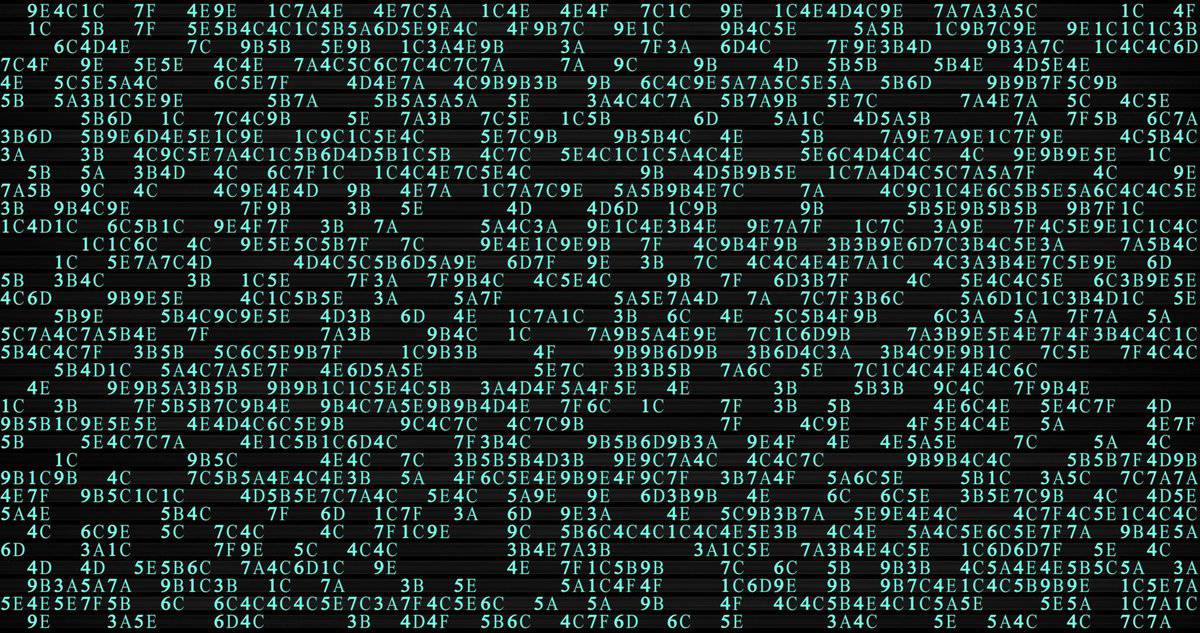 Machine codes are also known as machine language. It is considered the basic language of programming. Usually, other programming languages are first interpreted by translators, and they can be readable by the computer’s CPU. However, machine language needs no such translators, and they can be directly executed by your machine.
Machine codes are also known as machine language. It is considered the basic language of programming. Usually, other programming languages are first interpreted by translators, and they can be readable by the computer’s CPU. However, machine language needs no such translators, and they can be directly executed by your machine.
Machine language is actually written in binary numbers. Every machine has its own particular machine language. They command the CPU to execute certain tasks.
22. What is the “beta version” of a program?
A beta version of a computer program indicates an initial release of computer software, which is, however, not fully ready yet. It will have feedback and fixes and then modified for the final version.
It is a pre-release of the final version of the software. A big number of users are the target audience of the beta software. They will give full review and feedback for the improvement of the beta version. The beta version of a software is similar to the actual product in look and function as well.
23. What is the data structure?
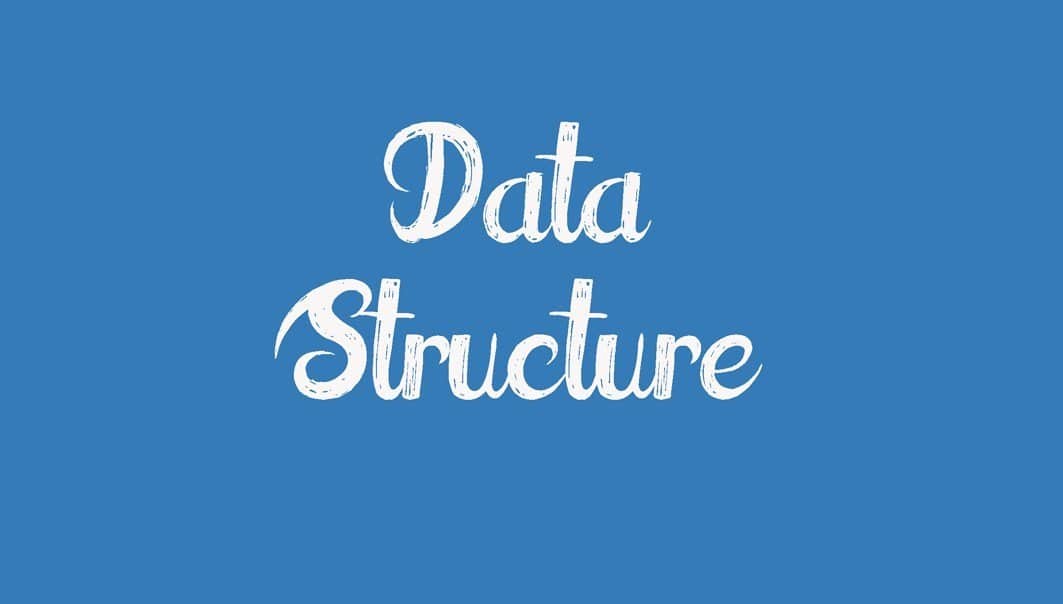 A data structure is a particular process of managing data in a machine. In this process, data is maintained in such a way that they can be used more proficiently later on a computer. It is also known as data management, as well.
A data structure is a particular process of managing data in a machine. In this process, data is maintained in such a way that they can be used more proficiently later on a computer. It is also known as data management, as well.
The data structure also refers to the storage of data values, relations between them, and the operations that can be implemented to them, through which efficient modification is done to the collection of data. Some examples of data structures are arrays, graphs, and stacks.
24. Please explain the linear and non-linear data structures.
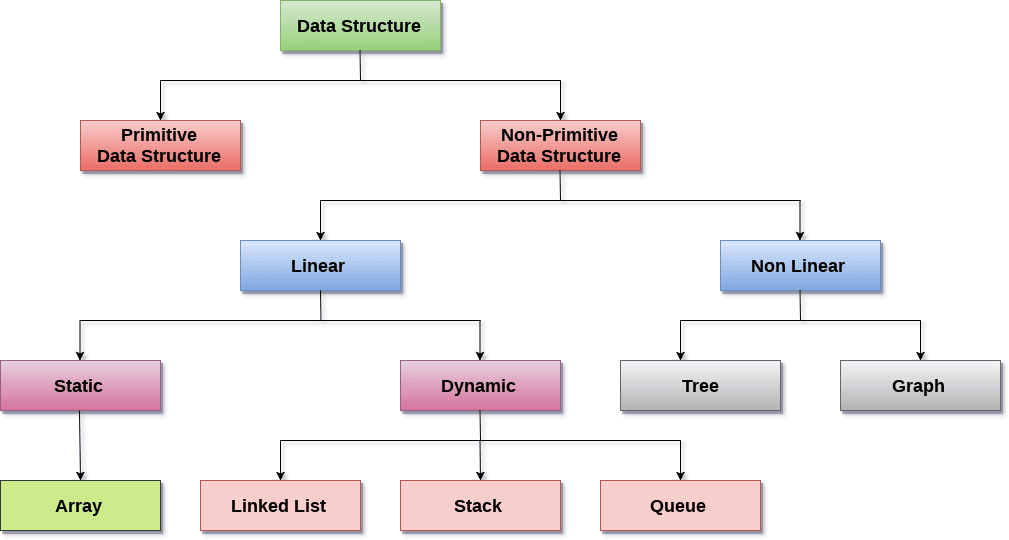 In a linear data structure, elements of the data structure are organized in a linear sequence. Here, each data element of the data structure establishes a connection with its previous and next adjoining. In other words, every data element is placed between its previous and next data elements. It is like a series of connections. Some examples of the linear data structure are array, stack, a list that is linked.
In a linear data structure, elements of the data structure are organized in a linear sequence. Here, each data element of the data structure establishes a connection with its previous and next adjoining. In other words, every data element is placed between its previous and next data elements. It is like a series of connections. Some examples of the linear data structure are array, stack, a list that is linked.
The non-linear data structure is, however, the exact opposite of linear data. Here, data elements are connected at random. Here, one data element can have a connection with several data elements (more than two specifically). A non-linear data structure is more complex than a linear data structure. Here, all the elements cannot be moved in a single execution only. Some examples of non-linear data structures are graphs, trees.
25. How does data structure help in practical life?
The easy part is over with our list of programming interview questions. With our next question, we are about to enter the intermediate level of coding interview questions. Here is what the answer should be,
The data structure is essential for areas where things are mostly controlled through data. Every day in our day to day life, we need things done through data. Hence, data structure plays a vital role in different aspects of our life. Some noteworthy areas where the data structure is mandatory are:
- Organizing database.
- Artificial Intelligence (AI)
- Numeric analysis.
- Different operational systems.
26. Can you explain what software testing is?
Software testing is a very common term in the programming world. And one of the very commonly asked programming interview questions.
Software testing is a process of testing a newly developed software under certain conditions. Software testing plays an important role in the industry of software development. Every software, whether it is a waterfall model or a RAD (Rapid Application Development) model requires to go through this process as the final preparation of software release. Software testing also ensures whether software provides a better user experience or not. Reasons why software testing is needed are:
- Makes sure the software works properly.
- Ensures quality.
- Checks whether the software meets user requirements or not.
27. Do you know what analyzing a program means?
 In the process of analyzing a program, developers divide the program into several sub-problems. In this way, programmers don’t have to solve the large problem at once, rather solving the sub-problems will do just fine. Then the total solutions of the sub-problems will come together to provide the most reasonable solution to the entire problem.
In the process of analyzing a program, developers divide the program into several sub-problems. In this way, programmers don’t have to solve the large problem at once, rather solving the sub-problems will do just fine. Then the total solutions of the sub-problems will come together to provide the most reasonable solution to the entire problem.
Note, analyzing a program is often referred to as the top-down design initiative.
28. What do you know about implementing a program?
When the process of software testing has been gone thoroughly, the next step is the implementation of a program. Once a program is thoroughly tested, it has to be installed on the end user’s device. After proper installation, the program has to be put into action.
This process of program installation and putting them into operation to the targeted destination is known as program implementation.
29. Please explain the program execution.
A program can come with a large number of instructions. To complete the specific task set in a program, your computer will execute those instructions. This process is called the execution of a program.
Note, before a proper execution of a program, it has to be loaded into your computer memory (RAM).
30. Explain how debugging is related to software testing.
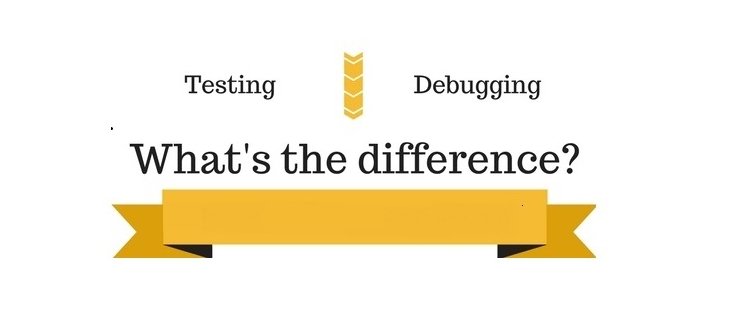 Software testing puts the software in the test under specific conditions. While debugging is the process of finding faults in a program. In this process, debuggers (debugging tools/ software) are used to find errors (bugs or issues) in a program under different development stages. Those conditions in which the problems have occurred are reproduced, and the program is run over again to discover what caused the problem at first.
Software testing puts the software in the test under specific conditions. While debugging is the process of finding faults in a program. In this process, debuggers (debugging tools/ software) are used to find errors (bugs or issues) in a program under different development stages. Those conditions in which the problems have occurred are reproduced, and the program is run over again to discover what caused the problem at first.
Note, debugging is an essential part of software testing. And hence plays a great role in the software development industry.
31. What is documentation in computer programming?
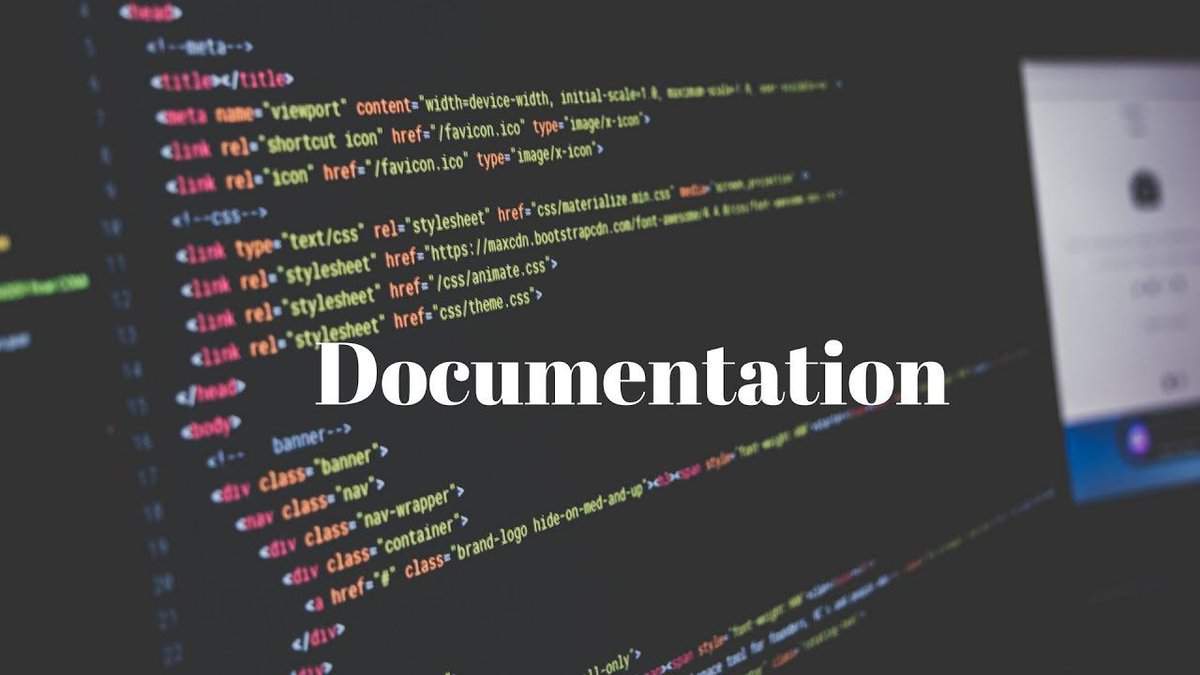 Not every candidate is aware of documentation in programming. Hence, in case you don’t miss it, you should focus on these kinds of programming interview questions as well.
Not every candidate is aware of documentation in programming. Hence, in case you don’t miss it, you should focus on these kinds of programming interview questions as well.
Documentation in computer programming is a written explanation of the code techniques used in that program, and it’s layout, test, and algorithm. It also holds the applications for specific computer programs.
Documentation is important for those who run the program or the program based application once in a while. It is also useful for regular programmers who need to update, change, or edit any part of the codes. Documentation helps to provide an easy solution related to that specific program for all kinds of programmers.
32. Why should we add comments to written codes?
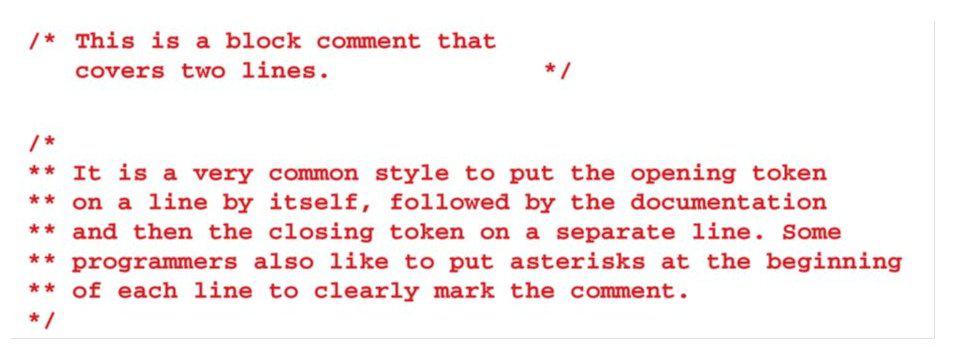 A regular computer program can hold up to thousands of lines of code (LOC). It is not very unusual even for a professional programmer to lose track of any single line of code. Hence, comments can help us understand the significance of any single line of code. Adding comments will make the user’s experience easy with programming.
A regular computer program can hold up to thousands of lines of code (LOC). It is not very unusual even for a professional programmer to lose track of any single line of code. Hence, comments can help us understand the significance of any single line of code. Adding comments will make the user’s experience easy with programming.
Comments are allowed in every programming language. Programmers can add as much comment as they need. However, comments won’t affect your program in any way.
33. Suggest some good practices in computer programming.
Yes, certain practices in computer programming can help improve your skills in programming. They are:
- Your program should follow the DRY theory.
- Maintain the simplicity of your code.
- Keep some common protocols for naming.
- Make sure you do not use too many nested loops.
- Maintain a proper length for your written codes.
- To avoid complexity, use comments more frequently.
34. What is the DRY Principle?
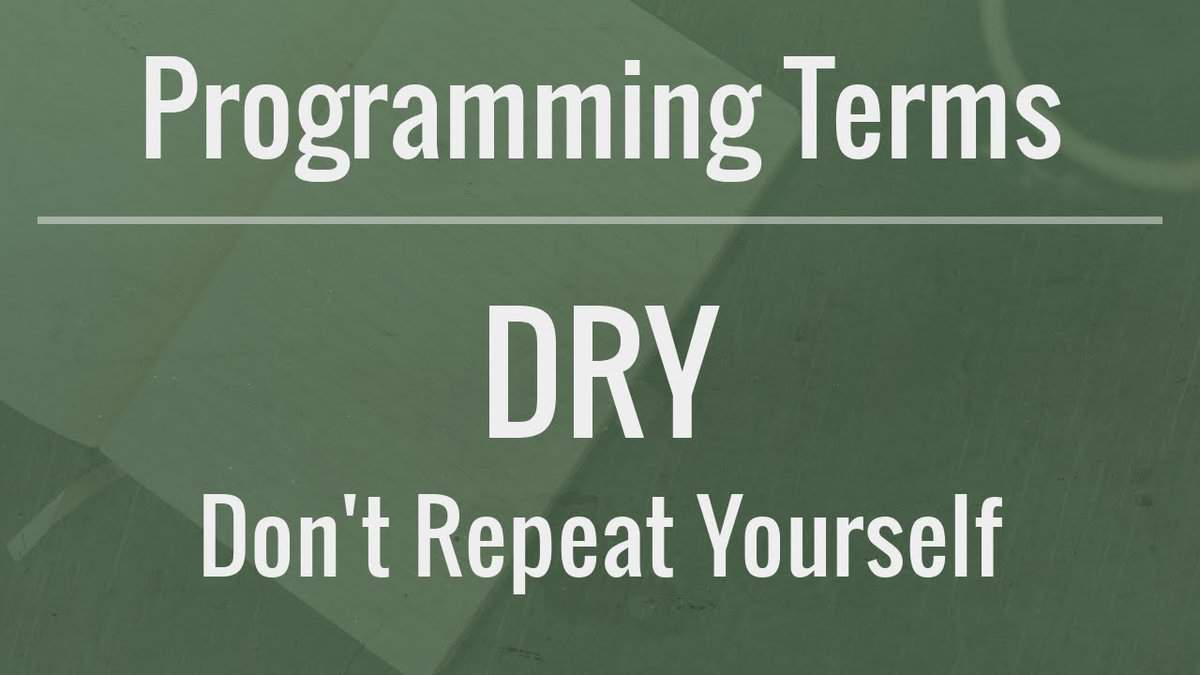 DRY is also known as Do not Repeat Yourself is a software development protocol. As the name suggests, the DRY principle in software development helps users so that they don’t duplicate the same software patterns in software.
DRY is also known as Do not Repeat Yourself is a software development protocol. As the name suggests, the DRY principle in software development helps users so that they don’t duplicate the same software patterns in software.
In order to implement DRY policy, repetitive software patterns are exchanged with abstractions. However, one can also employ a data normalization process to avoid such situations.
35. Do you know about WET solutions?
A few advanced levels of programming interview questions are very common to face before the board. The answer is,
Yes, I do. The WET solution is exactly the opposite of a DRY solution. You see, WET mostly means Write Everything Twice. Although the term has several other abbreviations as well, such as: “Write Every Time,” “We Enjoy Typing,” “Waste Everyone’s Time.”
Note, In application, WET solutions are noticeable in multi-layered architecture where demonstration, process policy of the application, and activities related to data management are disconnected separately.
36. What do you know about LIFO and FIFO?
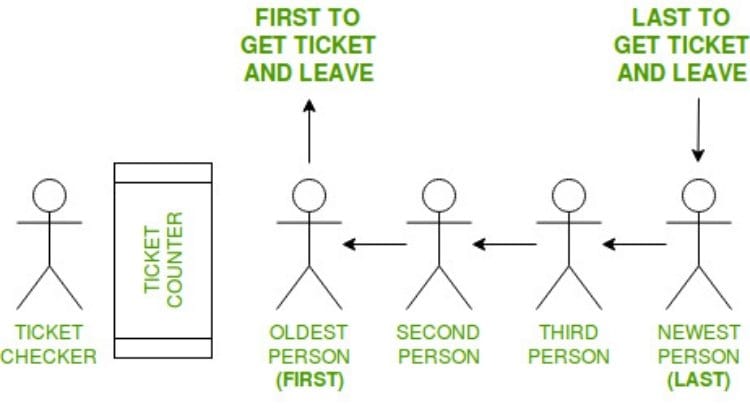 LIFO and FIFO are two popular approaches in computer programming. They are useful in the sense that, LIFO and FIFO help to manage (data access, recover data, or storing data) data structures in two different ways.
LIFO and FIFO are two popular approaches in computer programming. They are useful in the sense that, LIFO and FIFO help to manage (data access, recover data, or storing data) data structures in two different ways.
LIFO, as in Last In First Out, is the policy where newly stored data is processed first. LIFO is also known as FILO (First In, Last Out). While processing data in the LIFO form, LIFO is stack.
Whereas, FIFO stands for First In First Out. In FIFO, the first element of data structure is managed first, and the latest element is recovered at last. Unlike LIFO, FIFO is queue during the implementation of data structure.
37. What is NULL and VOID in programming?
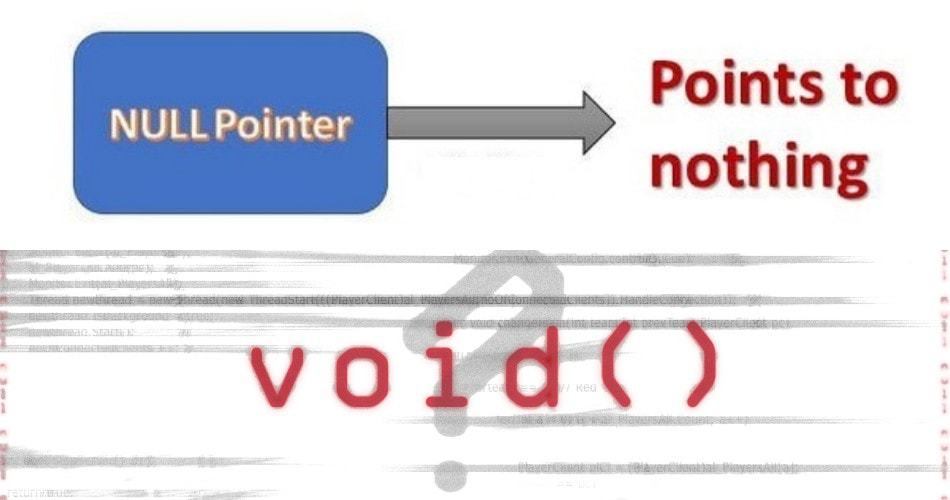 Null in programming doesn’t really indicate that the variable presents no value. Rather it means that the variable contains no valid value. In programming, a variable having a null value means that a variable with an empty value. Some null values can be returned based on the essentials of a program.
Null in programming doesn’t really indicate that the variable presents no value. Rather it means that the variable contains no valid value. In programming, a variable having a null value means that a variable with an empty value. Some null values can be returned based on the essentials of a program.
VOID value, on the other hand, represents no primary size. Void values in a variable do not return at all.
38. What is an AVL tree?
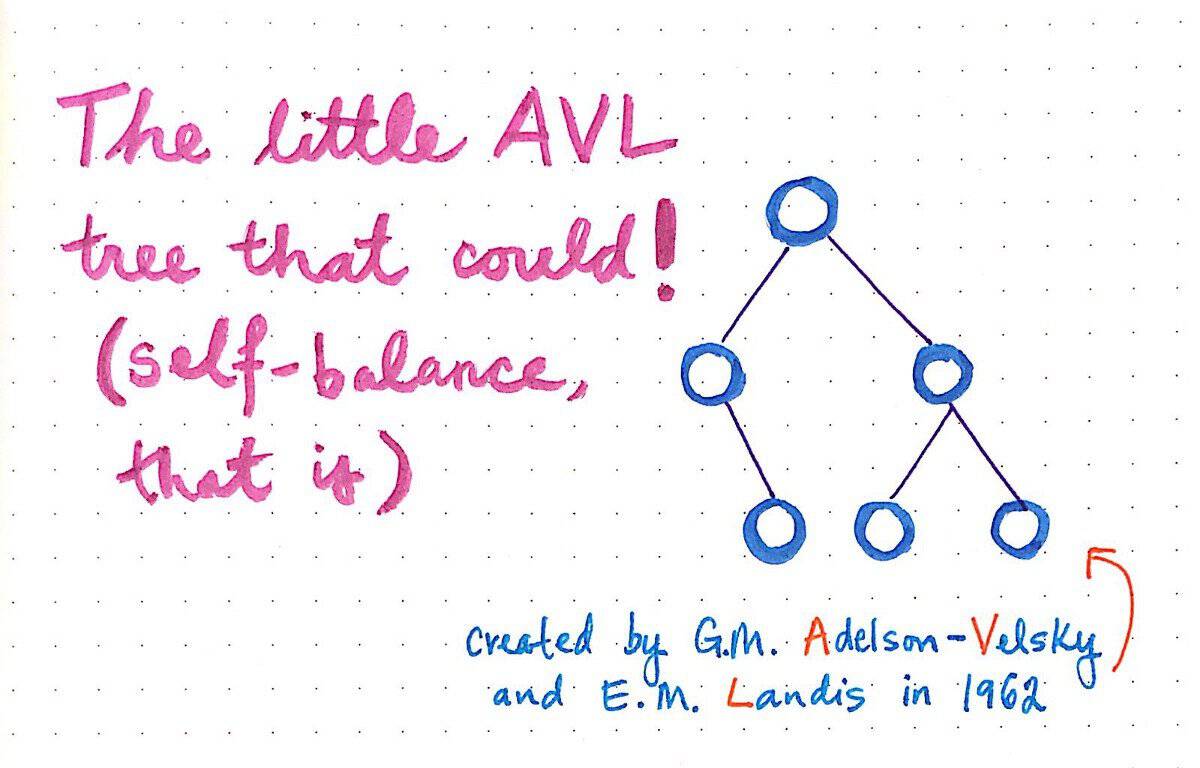 To win over the competition with other candidates, you should definitely be aware of the AVL tree. It is one of the very regular programming interview questions.
To win over the competition with other candidates, you should definitely be aware of the AVL tree. It is one of the very regular programming interview questions.
In computer programming, an AVL tree is a partly balanced binary search tree. In this form of data structure, there is a limit set in the height between the right and left subtrees of a node. The difference is 1 or less than 1 in every case. AVL tree is the first of its kind.
However, if there is any imbalance found (subtrees height difference becoming more than), rebalance will be done immediately.
39. What is Sorting in Computer Programming?
Sorting in computer programming is a method of organizing elements of a data structure in an ascending (uprising) or descending sequence. There are several types of sorting types available in computer programming. They are:
- Bubble Sort.
- Selection Sort.
- Merge Sort.
- Heap Sort.
- Insertion Sort.
- Quick Sort.
40. Do you know about Bubble Sorting?
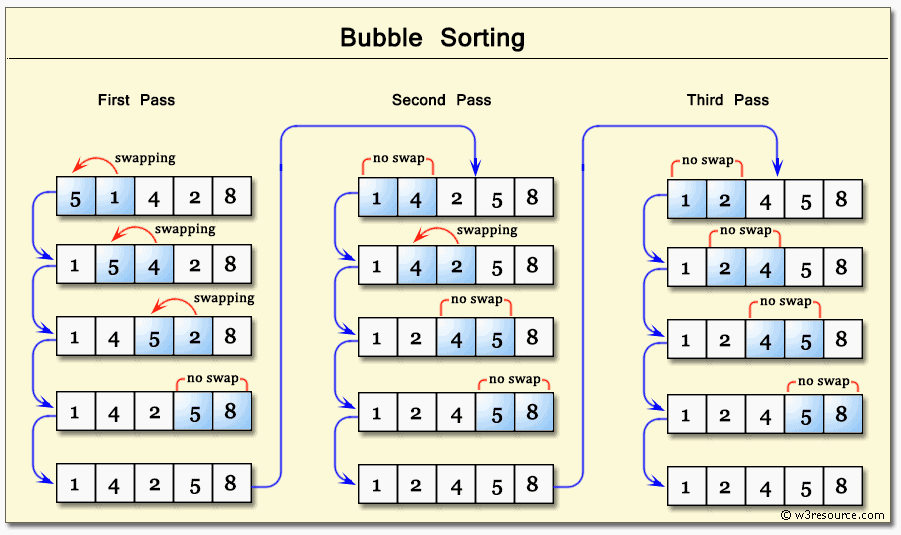 Bubble is a very basic sorting algorithm in Computer Programming. It is also known as a sinking sort. Here, elements located beside each other in a data structure (such as an array) are continuously compared until the order of the list is corrected. The elements will be exchanged only if two adjacent elements are in the wrong order.
Bubble is a very basic sorting algorithm in Computer Programming. It is also known as a sinking sort. Here, elements located beside each other in a data structure (such as an array) are continuously compared until the order of the list is corrected. The elements will be exchanged only if two adjacent elements are in the wrong order.
It is named as bubble sort because the largest element in the data structure is placed on top. Or see it the other way that the largest of all elements sink to the top of the list, just the way bubbles in water do. Hence, the name is bubble sort.
41. Do explain Selection Sorting.
Selection sorting is another simple sorting technique for computer programming. Unlike bubble sorting, in selection sorting, the list of elements is divided into two portions. One part holds the sorted elements, whereas the other one contains the unsorted elements. At the beginning of the sorting, sorting elements are zero, and unsorted elements are the maximum.
The selection process starts with the element that holds the smallest value. And exchange its place with the leftmost element of the unsorted list. Thus becoming a part of the sorted list. Then the next smallest value is swapped in the same process until the list is organized.
42. What is the term “undefined value” means in programming?
The term undefined value in computer programming refers to such a condition where the value of a variable cannot be defined. In other words, undefined values are not correct. Often they hold an infinite value or values that are not practically expressive.
For example, when you divide the full integer by zero, we all know that the result is infinite. However, your compiler will show an error message. And hence, the result will be undefined.
Often undefined value is mistaken with other conditions such as empty values or strings; even boolean expressions are also sometimes confused with undefined values.
43. What does a palindrome program do?
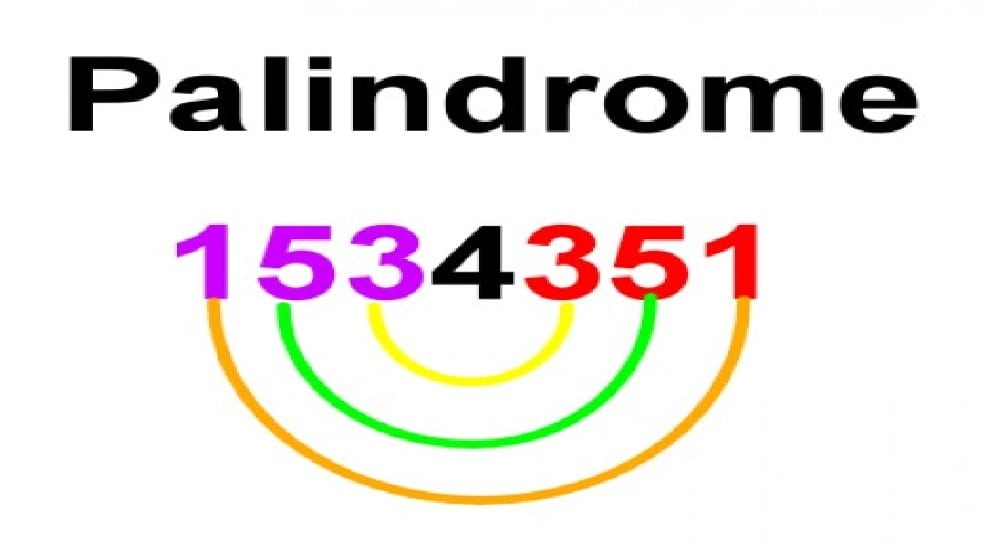 A palindrome can be a word or phrase. When a word or phrase can be read the same way backward as the way it is read in forward, it is called a palindrome. A palindrome can be words as well as be numbers. For example, the word “WOW” is a palindrome. It is read the same both in forward and backward. The same way, 11, 22, 33, and many other numbers are also the same when reading backward and forward.
A palindrome can be a word or phrase. When a word or phrase can be read the same way backward as the way it is read in forward, it is called a palindrome. A palindrome can be words as well as be numbers. For example, the word “WOW” is a palindrome. It is read the same both in forward and backward. The same way, 11, 22, 33, and many other numbers are also the same when reading backward and forward.
A palindrome program will make sure if a word or number is palindrome or not.
44. Explain Huffman’s algorithm and its function.
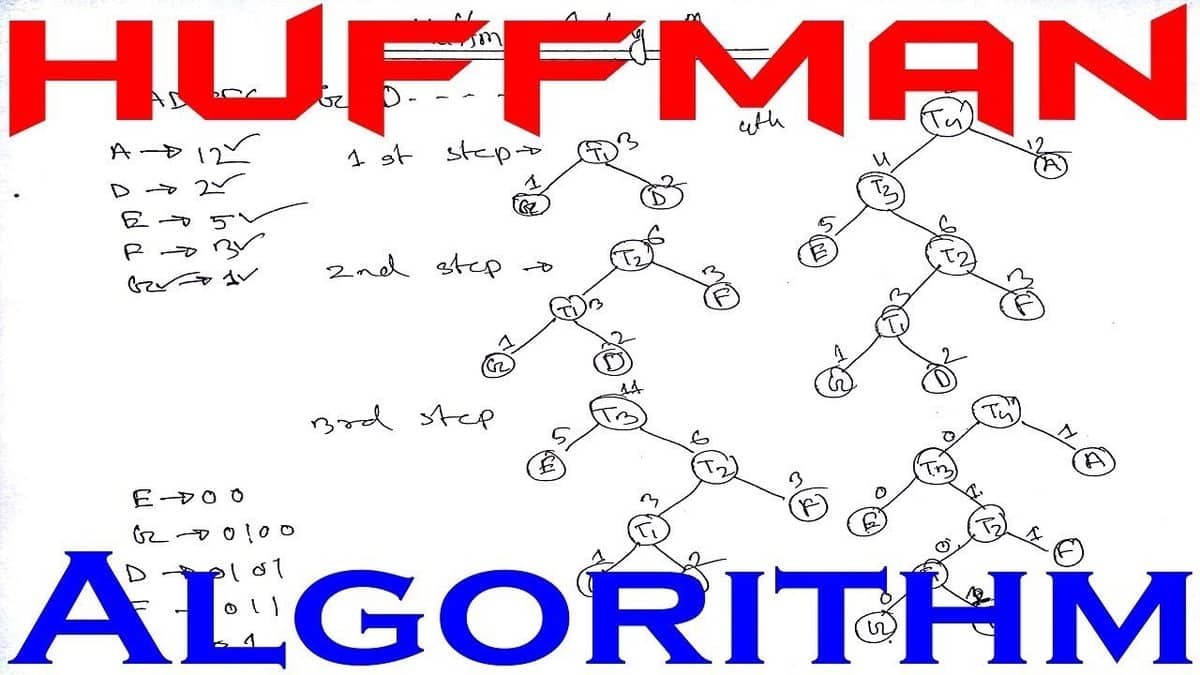 Huffman’s algorithm, also known as Huffman’s coding, is a precise code for lossless data.compression. Huffman code is a prefix code. And it is widely used in a variety of compression types, such as Winzip, gzip, and image formats such as JPEG and PNG.
Huffman’s algorithm, also known as Huffman’s coding, is a precise code for lossless data.compression. Huffman code is a prefix code. And it is widely used in a variety of compression types, such as Winzip, gzip, and image formats such as JPEG and PNG.
The main purpose of Huffman is to widen the binary trees. Huffman algorithm makes the use of a table that holds the complete number of times for each and every data element.
45. What is the Fibonacci search?
In computer programming, the Fibonacci search makes the use of Fibonacci numbers to search an item in a sorted array. So, basically, the Fibonacci search is a search technique that works based on the comparison.
In order to find a particular element in a sorted array, the Fibonacci search uses a divide and conquer algorithm. This divides and conquers algorithm indicates a few reasonable locations of the specific element using Fibonacci numbers.
46. What is a linked list?
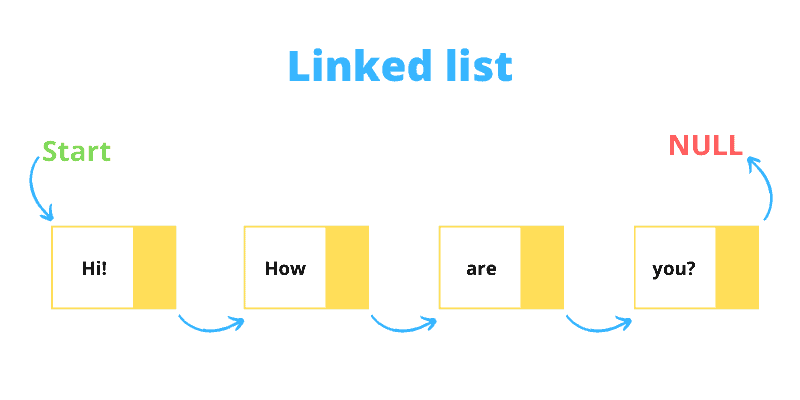 A linked list in computer programming is a form of linear data structure. Here, each element is individual. In a linked list, elements do not share any physical memory location; rather, they are connected through pointers. Hence, the name is a linked list.
A linked list in computer programming is a form of linear data structure. Here, each element is individual. In a linked list, elements do not share any physical memory location; rather, they are connected through pointers. Hence, the name is a linked list.
Unlike other data structures, here each and every element of the list is configured with two things – 1) the data itself, 2) a reference to the next element node. The first node points to the next one, and that’s how the link method goes on. However, the last one points to a null reference.
47. What is data abstraction?
Data abstraction in computer programming is a particular way of data simplification. It depletes specific parts of data and helps to turn it into an easily maintainable form. Data abstraction, in other words, cuts down some specific characteristics from data and reduces them into some useful characteristics.
Note, it is the initial step to the decoration of the database.
48. Please explain a recursive function.
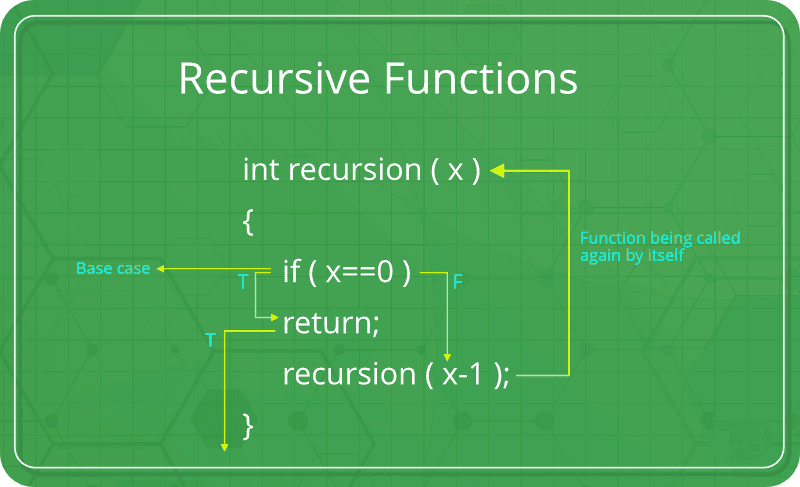 A recursive function is such a function that calls itself. Recursive functions allow themselves to repeat themselves again and again during the execution period. Recursive functions focus on closing conditions. And these functions also make the use of stacks.
A recursive function is such a function that calls itself. Recursive functions allow themselves to repeat themselves again and again during the execution period. Recursive functions focus on closing conditions. And these functions also make the use of stacks.
49. What is a Binary search?
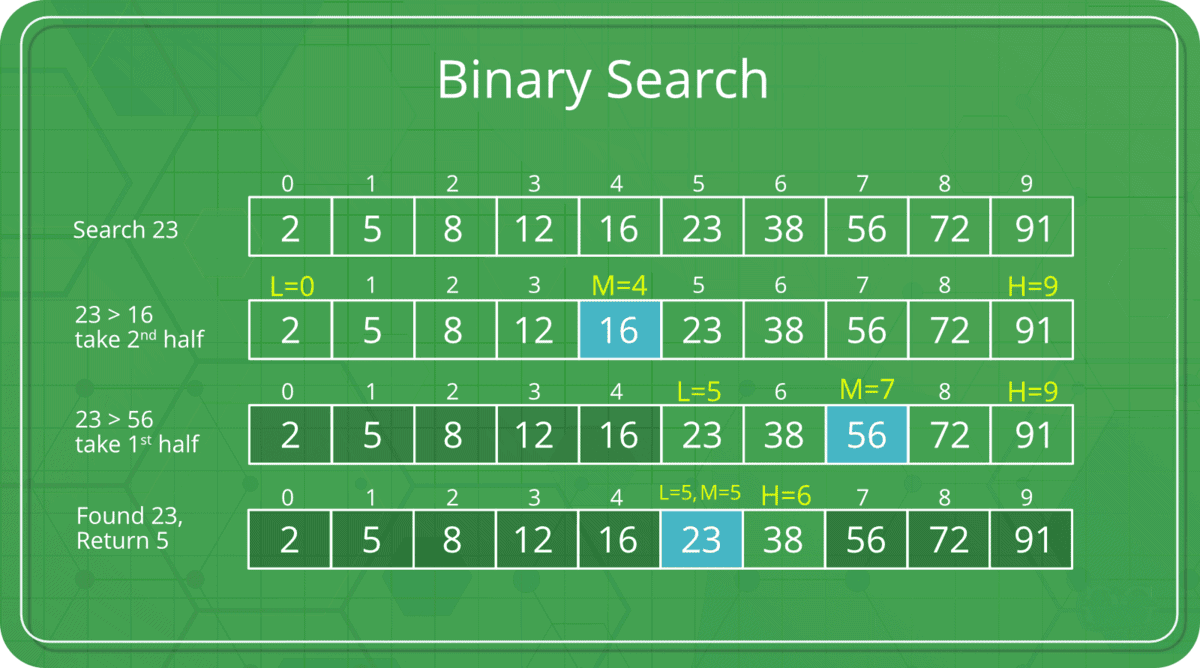 In the world of computer programming, binary search is also known as binary chop or logarithmic search. It is a search technique for the sorted array. Binary search helps to locate the position of specific value in a sorted array.
In the world of computer programming, binary search is also known as binary chop or logarithmic search. It is a search technique for the sorted array. Binary search helps to locate the position of specific value in a sorted array.
In a sorted array, the binary search starts with the element in the middle. If the element in the middle is, however, doesn’t hold the target value, then the process continues with whether the lower half or upper half of the array. If the proper solution is not found, then the same procedure keeps repeating.
50. How does dynamic memory allocation help to maintain data?
Yes, I do. Dynamic memory allocation is a process of assigning memory during the runtime. Dynamic memory allocation piles basic types of structured data. Apart from storing structured data, it also merges individually issued structured blocks in order to develop composite structures.
These composite structures are flexible to easy expansion and contraction as required. Note, along with many other benefits of dynamic memory allocation, one major one is, it saves a lot of memory usage.
Final Thoughts
Here ends our list of 50 frequently asked programming interview questions. Even if you are a new graduate, our list will help you to be one step ahead of other freshers on the board. However, ours is definitely a good selection of the most asked questions in a programming interview board. If you feel like we are missing any important interview questions, do let us know in the comment section. Also, don’t forget to share our content with your friends.

Fantastic article. Please write more.
Thanks you